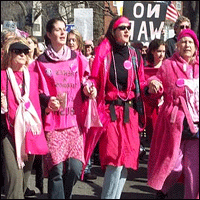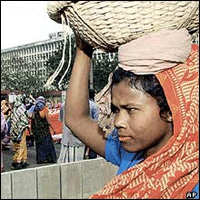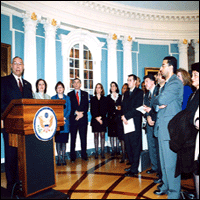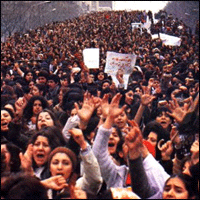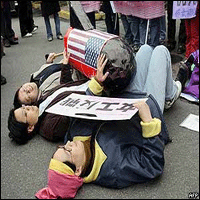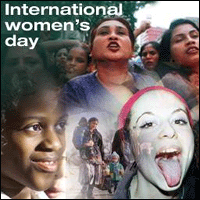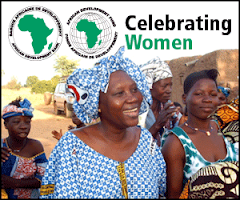
Saturday, February 28, 2009
Where are the women?

Historic milestone predicted - more working women than men

Women may become more than 50 percent of US employment if the recession continues long and severe and this is something that historians will analyse considerably for many years.
In 1950 about one in three women participated in the US labor force. By 1998, nearly three of every five women of working age were in the US labor force. Among women age 16 and over, the US labor force participation rate was 33.9 percent in 1950, compared with 59.8 percent in 1998. As more women are added to the labor force, their share approaches that of men. In 2008, women made up about 48 percent of the US labor force and men 52 percent.
Throughout the 1990s and 2000s, and until this recession, women remained less than 49 percent of the US work force. However, that percentage has now passed 49 percent and may cross the 50 percent threshold for the first time. If the pundits are right that this recession will be long and severe, then women may gain the 0.9 percentage points from November 2008 that would push them past the 50 percent employment milestone and this is something that historians will certainly note for years to come.
Education is key to employment so it is interesting to note that the number of women graduating from Iran's universities is overtaking the number of men, promising a change in the job market and, with it, profound social change. Well over half of university students in Iran are now women. In the applied physics department of Azad University 70% of the graduates are women - a statistic which would make many universities in the West proud.
One profound social change ocurring is that young women who do have careers are now beginning to think twice about getting married. This is a very complex issue in certain cultures like under Iranian law where a woman still needs her husband's permission to go to work.
Working mothers are a relatively new phenomenon in Iran but attitudes are changing among the younger generation of working women, many of whom will no longer accept a husband who does not share the workload at home. Many believe Iranian women who have worked hard to overtake Iranian men will be the ones to bring about social and political change.
Many women say it is preferable for women to work while they are raising a family, however a significant majority think most women are conflicted about raising a family and working. Many women believe that it was due to the women’s movement and continuous campaigning for equal rights that massively helped improve the lives of working women.
But all is still not equal in the boardroom however there is good news for those organisations who maintain a diverse group of directors. Companies with the highest percentage of female corporate officers on average experience, a 35% higher return on equity and a 34% higher total return to shareholders than those with the lowest percentage of female corporate officers.
Portrayal of women in the media

Women and wealth

Monday, February 23, 2009
IWD IN PICTURES
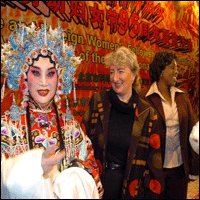
Peking Opera artists celebrateIWD
in Beijing, China
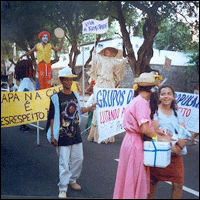
Women call for equality at
IWD march in Salvador, Brazil
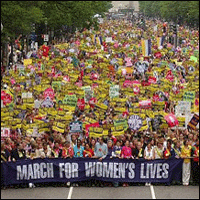
Global activity continuesevery
where on IWD ...
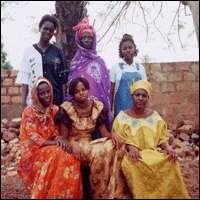
Women gather in Guinea, Africa
(someof these women are no longer with us)

Australian Emergency Servicevolunteers
at IWD event
How will women fare under Obama?

Barack Obama has stacked competent women around him at all levels of the administration, not just at the top level but also at the second and third layers.
Three of the fifteen members in his Cabinet are women, or not quite 20%. Obama is used to having strong women around him. Most of these positions are in the national security and economic issues arenas so are key positions.
- Hillary Rodham-Clinton, Secretary of State
- Hilda Solis, Secretary-Designate, Department of Labor
- Janet Napolitani, Secretary, Department of Homeland Security
And there are further powerful women in critical roles:
- Christina Romer, Chair, Council of Economic Advisors
- Susan Rice, United States Ambassador to the United Nations
- Lisa Jackson, Administrator of Environmental Protection Agency
So exactly what can women expect from the Obama Administration. What will the US Gender Agenda really look like? Well the Obama Adminstration has set a clear agenda for women and it is as follows.
Healthcare:
- Fixing the Nation's Health Care System
- Empowering women to prevent HIV/AIDS
- Supporting research into women's health
- Fighting Cancer
- Reducing health risks due to mercury pollution
- Supporting stem cell research
Reproductive choice:
- Supporting a woman's right to choose
- Preventing unintended pregnancy
Preventing violence against women:
- Reducing domestic violence and strengthening domestic violence laws
- Fighting gender violence abroad
Economic issues:
-Fighting for pay equity and encouraging retirement saving
- Expanding paid sick days
- Investing in women-owned small businesses -
-Protecting social security
National security:
- Caring for women veterans
Poverty:-
- Renewing efforts to tackle underlying problems causing poverty
- Raising the minimum wage and helping low-income workers
Education:
- Protecting title tax
- Expanding early childhood education and improving schools
- Making college more affordable
Does Obama lead towards a feminist agenda?
 Ms Magazine features Barack Obama as a Super Feminist, pictured tearing off his superman shirt saying "This is what a feminist looks like".There are high expectations amongst feminists as to how much gender will influence the policy agenda.Feminists believe that previously under the Bush administration certain legislation would not have been signed so was not put forward.Many feminists are hopeful that more pro-feminist legislation will now get through the Senate.Feminists believe that the Obama Administration is listening to women and asking the right kind of questions for women. Equal Pay, Children's Health and various
Ms Magazine features Barack Obama as a Super Feminist, pictured tearing off his superman shirt saying "This is what a feminist looks like".There are high expectations amongst feminists as to how much gender will influence the policy agenda.Feminists believe that previously under the Bush administration certain legislation would not have been signed so was not put forward.Many feminists are hopeful that more pro-feminist legislation will now get through the Senate.Feminists believe that the Obama Administration is listening to women and asking the right kind of questions for women. Equal Pay, Children's Health and variousDomestic legislation will be watched closely.Michelle's success as the First Lady is also seen as an incredible moment for women around the world as many believe she represents the struggles of many mothers and working women.
Obama signs workforce anti-discrimination law
President Obama signed his first bill into law handing his labor and women's rights backers a victory by reversing a 2007 US Supreme Court decision that made it harder to sue for pay discrimination. On average, US women are paid 23% less than men while minority women receive even less
Will Obama have the time for a gender agenda?
But how much time will Obama really have to focus on gender issues with so many other pressing issues? Will awareness of gender issues penetrate and integrate with mainstream policy? Christina Roma, one of the key architects of Obama's Economic Stimulus Package was very responsive to feminist concerns that the package might create millions of jobs but that these jobs might only be for "burly men in construction building bridges and roads" and this would have a consequence for women. Roma outlined the focus also on healthcare, education and the retail trade where women are disproportionately a large factor of the workforce so this suggests.
ABOUT INTERNATIONAL WOMEN'S DAY

The new millennium has witnessed a significant change and attitudinal shift in both women's and society's thoughts about women's equality and emancipation. Many from a younger generation feel that 'all the battles have been won for women' while many feminists from the 1970's know only too well the longevity and ingrained complexity of patriarchy. With more women in the boardroom, greater equality in legislative rights, and an increased critical mass of women's visibility as impressive role models in every aspect of life, one could think that women have gained true equality. The unfortunate fact is that women are still not paid equally to that of their male counterparts, women still are not present in equal numbers in business or politics, and globally women's education, health and the violence against them is worse than that of men.
However, great improvements have been made. We do have female astronauts and prime ministers, school girls are welcomed into university, women can work and have a family, women have real choices. And so the tone and nature of IWD has, for the past few years, moved from being a reminder about the negatives to a celebration of the positives.
